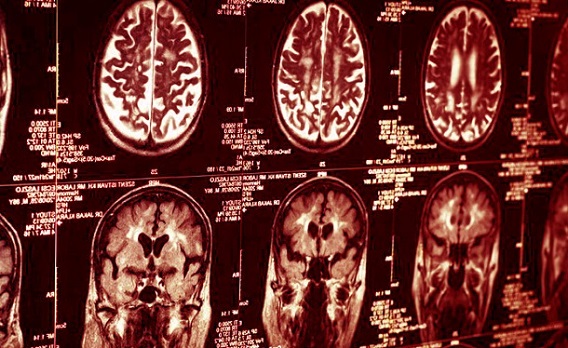Nikhil Prasad Fact checked by:Thailand Medical News Team Sep 08, 2025 3 months, 4 weeks, 1 day, 22 hours, 54 minutes ago
Medical News:
A Deadly Brain Cancer with Few Options
Glioblastoma is one of the deadliest forms of brain cancer. It spreads rapidly, resists standard treatments, and leaves most patients with only one to two years to live after diagnosis. Doctors usually rely on surgery, radiation, and chemotherapy, but these tumors almost always return and adapt. Now, new research suggests that the way cancer cells process nutrients may hold the key to slowing their growth. According to this
Medical News report, altering diet in specific ways may make these tumors more vulnerable and improve outcomes.
 Diet Change Slows Aggressive Brain Cancer Growth
Who Conducted the Study
Diet Change Slows Aggressive Brain Cancer Growth
Who Conducted the Study
The study was carried out by scientists at the University of Michigan, with contributions from experts at the Rogel Cancer Center, the Department of Neurosurgery, the Department of Biomedical Engineering, and the Department of Molecular and Integrative Physiology. Their work involved both animal models and human patients, giving the research rare depth and clinical relevance.
How Cancer Cells Steal Sugar
The researchers wanted to understand how brain cancer cells use sugar compared to healthy brain cells. The brain needs sugar to power thoughts, energy, and communication between cells. But when labeled sugar was injected into patients and mice, the team found a stark difference. Healthy brain tissue burned sugar for energy and neurotransmitters, while cancer cells diverted sugar to build DNA and RNA—the raw materials for endless new tumor cells. This reprogramming gave cancer a dangerous advantage, helping it grow and invade surrounding tissues.
Dr. Andrew Scott, one of the lead researchers, described it as “a metabolic fork in the road.” The normal brain took the path toward function and health, while the cancer took the path toward unchecked expansion.
Amino Acids and the Tumor’s Appetite
The team discovered another striking detail. While normal brain cells made amino acids from sugar, tumor cells shut down that ability and instead scavenged amino acids directly from the bloodstream. Among the most important were serine and glycine, two building blocks that tumors used to grow stronger and resist treatments.
This led the researchers to a bold idea: what if they reduced these amino acids in the blood through dietary changes? If tumors depended on scavenging, cutting off the supply might weaken them without harming healthy brain tissue.
Testing Diet in Mice
To test their theory, mice with glioblastoma were fed diets that lacked serine and glycine. The results were striking. The tumors grew more slowly, and when combined with radiation and chemotherapy, the restricted diet made standard treatments more effective. Tumors in mice without serine and glycine were smaller and less aggressive than those in mice on normal diets.
Dr. Deepak Nagrath, professor of biomedical engineering, explained
that removing these amino acids forced tumors to struggle, while healthy brain tissue continued to function.
A Roadmap to Future Therapies
The researchers also built mathematical models of how glucose moves through different pathways in the brain. This allowed them to identify the “busy highways” that cancer cells rely on most. By targeting these high-traffic routes—whether with diets, drugs, or both—future therapies could selectively block tumor growth while sparing healthy brain activity.
Dr. Costas Lyssiotis, professor of molecular and integrative physiology, compared it to putting up a roadblock on a packed freeway versus a quiet backroad. Blocking the busy route where cancer depends will have a far greater effect.
What This Means for Patients
Although these results are still in early stages, the findings give new hope. Specialized diets could one day be used alongside radiation and chemotherapy to extend survival and slow glioblastoma growth. Clinical trials are already being prepared to test whether lowering blood serine in patients can replicate the dramatic results seen in mice.
Dr. Daniel Wahl, co-senior author and associate professor of radiation oncology, emphasized the collaborative nature of the study, saying that no single researcher could have achieved it alone. Neurosurgeons, cancer biologists, and engineers worked together to uncover how metabolism fuels glioblastoma’s deadly drive.
Why This Matters
For decades, glioblastoma has remained one of the most feared diagnoses in medicine, with little progress in survival rates. By showing that these tumors depend on unusual ways of processing sugar and amino acids, the study opens a new front in the fight. Instead of only cutting or zapping tumors, doctors may soon also starve them by restricting their fuel.
The implications go beyond brain cancer. If diet can be used to shift metabolism in such a powerful way, other cancers that hijack nutrients may also be vulnerable.
Conclusion
This groundbreaking research suggests that cancer’s greatest strength—its ability to adapt and grow—may also be its weakness. By revealing how glioblastomas reroute sugar and scavenge amino acids, the University of Michigan team has provided a new strategy for slowing one of the most aggressive brain cancers known. Diet changes, when combined with existing treatments, could improve outcomes for patients who currently face very few options. While much more research is needed, including large human trials, the prospect of using something as simple as diet to fight back against cancer is both promising and inspiring. It offers hope that in the near future, patients may not only live longer but also with better quality of life.
The study findings were published in the peer reviewed journal: Nature.
https://www.nature.com/articles/s41586-025-09460-7
For the latest on Glioblastoma, keep on logging to Thailand
Medical News.
Read Also:
https://www.thailandmedical.news/news/new-potential-glioblastoma-therapy-shows-powerful-results-using-dual-drug-combination
https://www.thailandmedical.news/news/retinoic-acid-may-hold-key-to-weakening-glioblastoma-resistance
https://www.thailandmedical.news/news/covid-19-and-glioblastoma-onset
